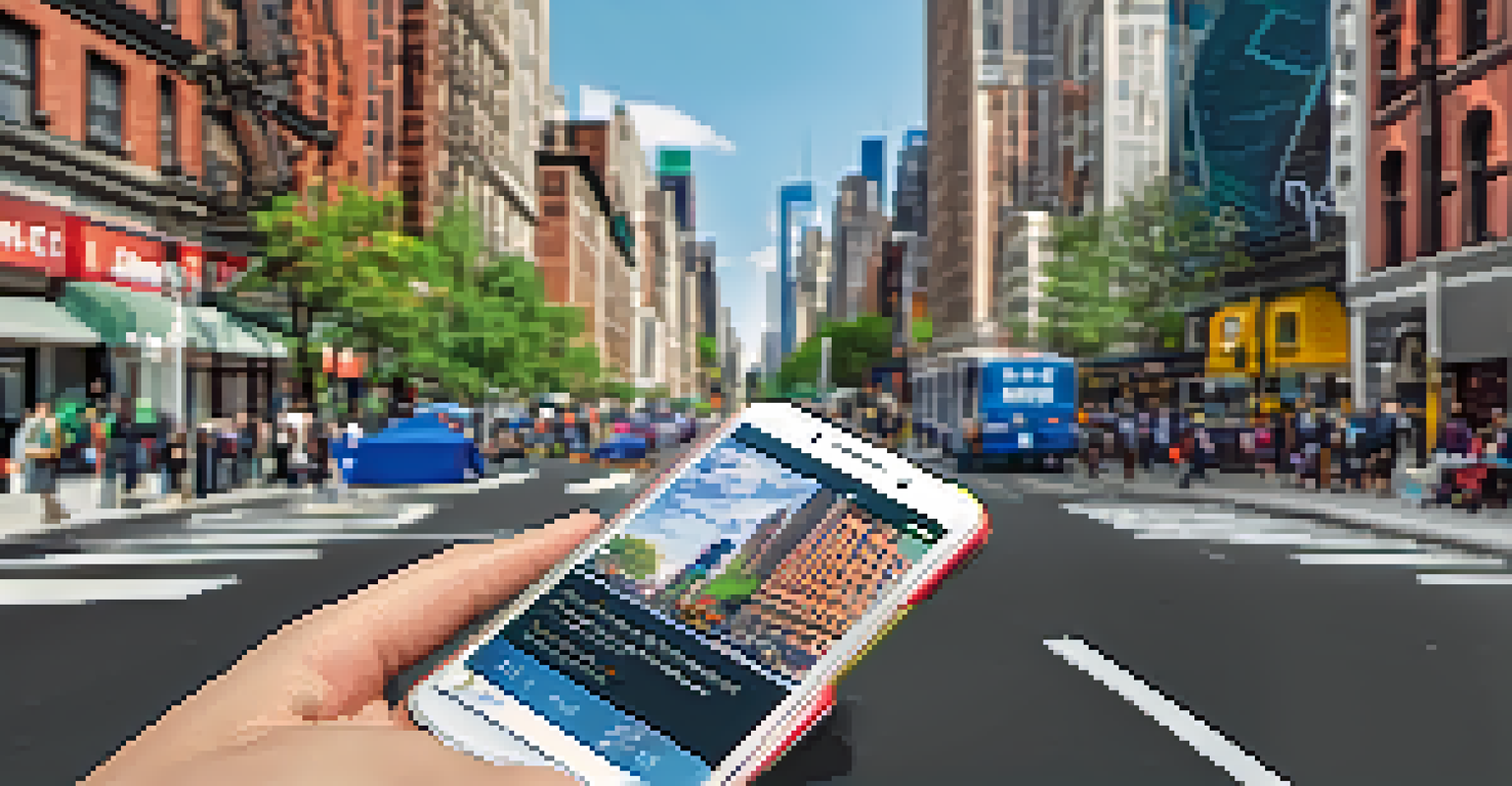Civic Tech Innovations: Case Studies from New York City

Understanding Civic Tech: What It Means for NYC
Civic tech refers to technology that aims to enhance civic engagement and improve government services. In New York City, this innovation plays a crucial role in connecting residents with local resources and decision-making processes. By leveraging digital tools, civic tech fosters transparency and accountability in government.
Technology is a tool, and in the hands of the people, it can create a better society.
For example, platforms like NYC's Open Data initiative allow citizens to access and analyze data on various city services. This not only empowers residents but also encourages them to participate in civic discussions and initiatives. The result is a more informed public that can effectively advocate for their needs.
Ultimately, understanding civic tech is essential for grasping how New York City is transforming its relationship with residents. It represents a shift towards a more participatory approach in governance, where technology acts as a bridge between the government and its citizens.
Case Study: NYC Open Data Initiative
The NYC Open Data initiative is a pioneering example of civic tech at work. Launched in 2012, it provides access to thousands of datasets related to city operations, ranging from crime statistics to public transportation schedules. This wealth of information enables residents to make data-driven decisions and engage with city services more effectively.

By making this data publicly available, the initiative fosters a culture of transparency. Citizens can easily access the information they need, leading to increased trust in city government. Moreover, various organizations and startups have utilized this data to create applications that address specific community needs.
Civic Tech Enhances Engagement
Civic tech initiatives in NYC, such as Open Data and NYC 311, empower residents to engage with local government and advocate for their needs.
Overall, the NYC Open Data initiative exemplifies how civic tech can enhance public engagement and improve city services. It empowers residents to take an active role in their communities and encourages innovative solutions to local challenges.
NYC 311: A Model for Citizen Engagement
NYC 311 is another prime example of how civic tech can improve citizen engagement. This service allows residents to report non-emergency issues and request city services through a simple phone call, app, or website. With 311, the city has created a direct line of communication between residents and local government.
Civic engagement is not just a right; it's a responsibility we share to shape our communities.
The system not only streamlines service requests but also collects valuable data that helps city officials identify trends and allocate resources more effectively. For instance, if a particular neighborhood experiences a spike in noise complaints, city officials can proactively address the issue.
Through NYC 311, residents feel heard and empowered to contribute to their community. This initiative demonstrates how civic tech can enhance communication and foster a sense of ownership among citizens.
Civic Tech and Community Safety: A Collaborative Approach
Civic tech has also made strides in promoting community safety in New York City. Initiatives like the Community Policing App allow residents to connect directly with local police officers. This collaboration fosters trust between law enforcement and the community, ultimately leading to safer neighborhoods.
By enabling residents to report concerns directly, the app empowers them to take an active role in their community's safety. Officers can respond promptly, ensuring that issues are addressed before they escalate. This approach not only enhances safety but also encourages open dialogue between citizens and law enforcement.
Youth Empowerment through Tech
Programs like the NYC Youth Tech Corps inspire young people to develop tech solutions that address community issues, fostering civic responsibility.
Through civic tech, the city is creating a shared responsibility for community safety. This innovative model highlights how technology can bridge gaps and build stronger, more resilient neighborhoods.
Engaging Youth Through Civic Tech Initiatives
One of the most exciting aspects of civic tech in NYC is its focus on engaging young people. Initiatives like the NYC Youth Tech Corps provide opportunities for students to learn about technology while contributing to their communities. This hands-on experience not only builds skills but also fosters a sense of civic responsibility.
By involving youth in civic tech projects, the city encourages the next generation to become active participants in governance. Programs often include workshops and hackathons, where students develop apps or solutions that address local issues. This engagement helps them understand the power of technology in shaping their communities.
Ultimately, these initiatives inspire young people to realize their potential as changemakers. Civic tech serves as a gateway for them to engage in civic life, ensuring that the voices of future generations are heard and valued.
The Role of Data Visualization in Civic Tech
Data visualization plays a pivotal role in making civic tech accessible and engaging. By transforming complex data into visual formats, such as charts and maps, New Yorkers can easily grasp important information. This clarity is crucial for fostering informed decision-making and public participation.
For instance, the NYC Crime Map allows residents to visualize crime patterns in their neighborhoods. By understanding where and when specific incidents occur, citizens can better advocate for safety measures and community resources. This tool exemplifies how effective data visualization empowers residents to take action.
Data Visualization Drives Action
Effective data visualization tools, like the NYC Crime Map, help residents understand complex information, enabling informed decision-making and community advocacy.
In essence, data visualization enhances the civic tech experience by making information more digestible. It bridges the gap between raw data and actionable insights, enabling citizens to engage with their city in meaningful ways.
Challenges and Future of Civic Tech in NYC
While NYC has made significant strides in civic tech, challenges remain. Issues such as digital equity and access to technology can limit participation among certain communities. The city must address these gaps to ensure that all residents can benefit from civic tech initiatives.
Moreover, as technology evolves, so do the needs of the community. Maintaining relevance requires ongoing collaboration between city officials and residents to identify emerging challenges and opportunities. This dynamic relationship is essential for adapting civic tech solutions to meet the ever-changing landscape of urban life.

Looking ahead, the future of civic tech in NYC holds great promise. By prioritizing inclusivity and innovation, the city can continue to harness technology to enhance civic engagement and improve the lives of all its residents.